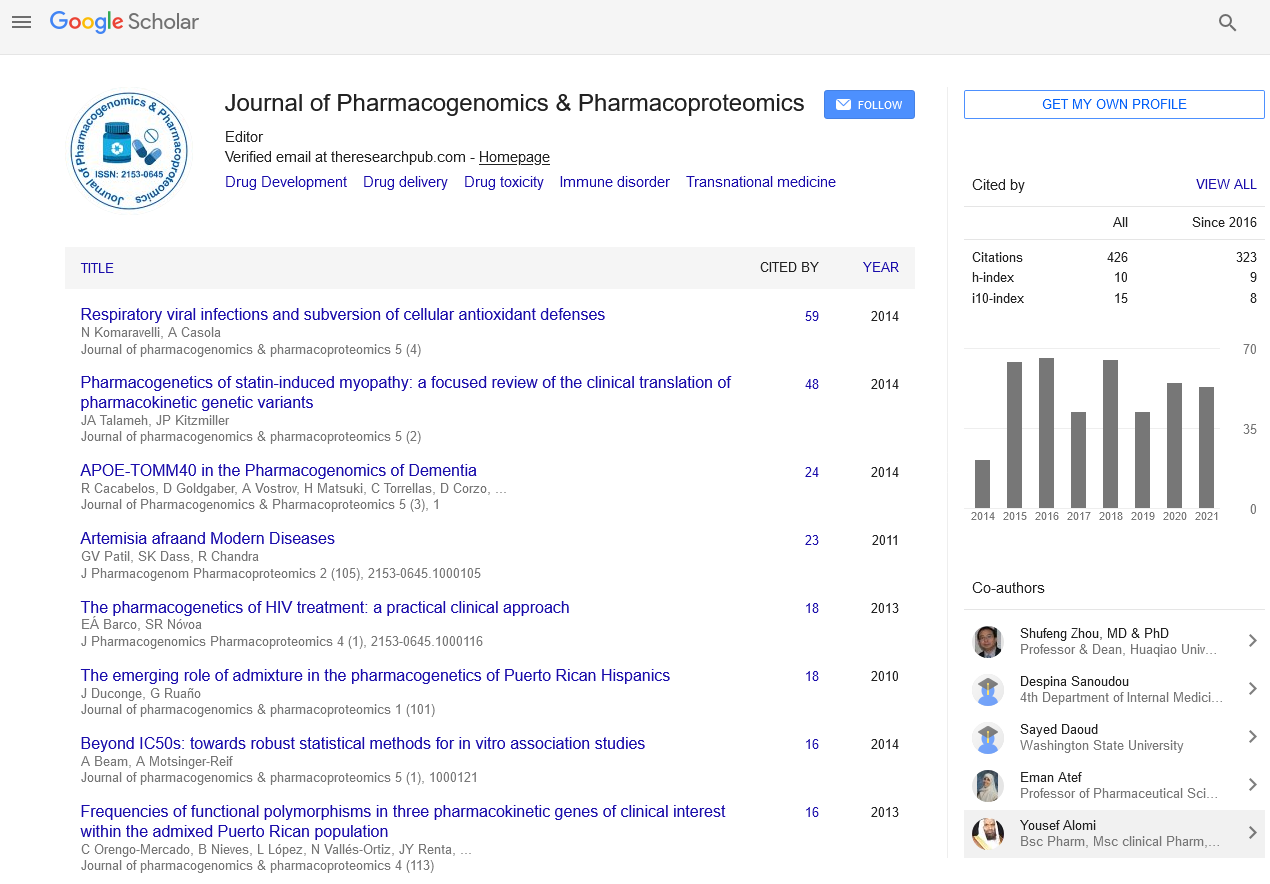Indexed In
- Open J Gate
- Genamics JournalSeek
- Academic Keys
- JournalTOCs
- ResearchBible
- Electronic Journals Library
- RefSeek
- Hamdard University
- EBSCO A-Z
- OCLC- WorldCat
- Proquest Summons
- SWB online catalog
- Virtual Library of Biology (vifabio)
- Publons
- MIAR
- Euro Pub
- Google Scholar
Useful Links
Share This Page
Journal Flyer

Open Access Journals
- Agri and Aquaculture
- Biochemistry
- Bioinformatics & Systems Biology
- Business & Management
- Chemistry
- Clinical Sciences
- Engineering
- Food & Nutrition
- General Science
- Genetics & Molecular Biology
- Immunology & Microbiology
- Medical Sciences
- Neuroscience & Psychology
- Nursing & Health Care
- Pharmaceutical Sciences
Bioelementology approach in personalized treatment of autism: Practical experience and future development
5th International Conference on Predictive, Preventive and Personalized Medicine & Molecular Diagnostics
December 01-02, 2016 Valencia, Spain
Anatoly V Skalny
RUDN University, Russia
Trace Element Institute for UNESCO, France
Scientific Tracks Abstracts: J Pharmacogenomics Pharmacoproteomics
Abstract:
Bioelementology approach was successfully used for diagnostic and treatment of trace element disorders and improvement of neuropsychiatric outcome in children with autism spectrum disorders (ASD). Hair and serum trace elements levels were assessed using inductively-coupled plasma mass spectrometry. A significant decrease in hair Cr, I and V was observed in children with ASD. Oppositely, hair Se levels significantly exceeded the control values. Surprisingly, hair toxic trace elements, namely As, Be and B, content was lower in children suffering from ASD. However, this finding is in agreement with the hypothesis of impaired metal detoxification in patients with ASD. Serum trace elements levels in children with ASD were more stable than those in hair. However, a significant decrease in serum levels of Ni, Cr and Se was detected. After considering the particular form of ASD it has been noted that different clinics is characterized by differentially altered trace elements levels. In particular, hair levels of Co, V and Ni were significantly lower than the control values in children with childhood autism, whereas Se content exceeded the control level. In contrast, children with atypical autism had only increased hair Se levels. Oppositely, serum levels of trace elements were more variable in children with atypical autism. In particular, children with atypical autism were characterized by significantly lower serum levels of Al, Ni, Cr, Mn and Se, whereas in patients with childhood autism only a decrease in hair Ni and Se was detected. It is notable, that children with atypical autism better respond to trace element supplementation therapy based on the results of trace element profiling and have improved neuropsychiatric status than those with childhood autism. Therefore, personalized treatment of ASD should be based on detailed analysis both hair and serum trace elements in every patient in order to obtain the better outcome.
Biography :
Anatoly V Skalny has completed his PhD from All-Union Centre for Narcology, Moscow, Russia. He is the Vice-President of Trace Element Institute for UNESCO, the Chairman of Russian Society of Trace Elements in Medicine and the Vice-President of the Federation of European Societies on Trace Elements and Minerals (FESTEM). He has published more than 200 journal articles, abstracts and book chapters in English. He is a Member of Editorial Board of Journal of Trace Elements in Medicine and Biology.
Email: skalny3@microelements.ru


